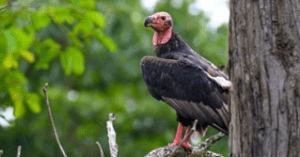Context:
The World-Wide Fund for Nature (WWF-India), in collaboration with Bird Count India and eBird, will launch Vulture Count 2024 on September 7, coinciding with International Vulture Awareness Day.
More on the news
- Its aims to monitor and conserve India’s vulture populations by gathering baseline data to track trends, identify key habitats, and assess environmental impacts.
- The drive will run until October 6 and is designed to inform targeted conservation strategies and raise public awareness about these endangered birds.
- The count will focus on key vulture species, including the white-rumped vulture, red-headed vulture, Indian vulture, bearded vulture, slender-billed vulture, Himalayan griffon, Eurasian griffon, Egyptian vulture, and cinereous vulture.
About Vulture
- Vultures are large, carnivorous birds renowned for their scavenging nature.
- These intelligent birds play a crucial role in maintaining environmental cleanliness and preventing disease spread.
- They are found on every continent except Antarctica, Australia, and surrounding islands.
- There are 9 species of vultures found in India.
Vultures are classified into two main groups:
Old World Vultures:
- Inhabit Asia, Africa, and Europe, and are closely related to hawks and eagles, though not to New World vultures.
- They rely primarily on their keen eyesight to locate food, have strong feet, and produce a range of vocalizations including grunts, chatter, and screeches.
Conservation status of 9 Species in India
- Critically Endangered: Indian Vulture (Gyps indicus), Slender-billed Vulture (Gyps tenuirostris), Red-headed Vulture (Sarcogyps calvus) and White-rumped Vulture (Gyps bengalensis).
- Endangered: Egyptian Vulture (Neophron percnopterus).
- Least Concern: Griffon Vulture (Gyps fulvus).
- Near Threatened: Himalayan Vulture (Gyps himalayensis), Cinereous Vulture (Aegypius monachus) and Bearded Vulture (Gypaetus barbatus).
New World Vultures:
- They are found in the Americas and are not closely related to Old World vultures; their connection is more evolutionary than genetic.
- Typically smaller, New World vultures use both sight and smell to find food.
- They have weaker, flat feet and produce only hissing and grunting sounds.
Physical Characteristics:
- Wide wingspans for soaring; the Andean condor is the largest, while the hooded vulture is the smallest.
- Rueppell’s griffon vulture is the highest-flying bird.
- Bare heads and necks aid in hygiene and thermoregulation; sunbakes germs off their heads.
Feeding Habits:
- Scavenge rather than hunt; consume nearly all parts of carcasses except bones.
- Engage in urohydrosis (urinating on legs) to stay cool and kill bacteria.
Social Behavior:
- Can be solitary or social; often feed in groups known as a committee, volt, or venue, and in flight as a kettle.
- Exceptional eyesight, spotting carcasses from up to four miles away.
- New World vultures wait for other predators to open carcasses.
Reproduction:
- Most mate for life; display aerial courtship by soaring and showing off flying skills.
- Old World vultures build large stick nests, while New World vultures lay eggs in bare scrapes.
- Female lays 1-3 eggs; both parents incubate and care for chicks until they are independent.
Defense Mechanisms:
- Vomit when threatened to deter predators or lighten body weight for escape.

Lifespan:
- Vultures can live up to 50 years in the wild.
Threats:
- Include the ingestion of toxic non-steroidal anti-inflammatory drugs (NSAIDs) like diclofenac, commonly used in livestock treatment, as well as habitat loss, electrocution, food scarcity, and human disturbances.

